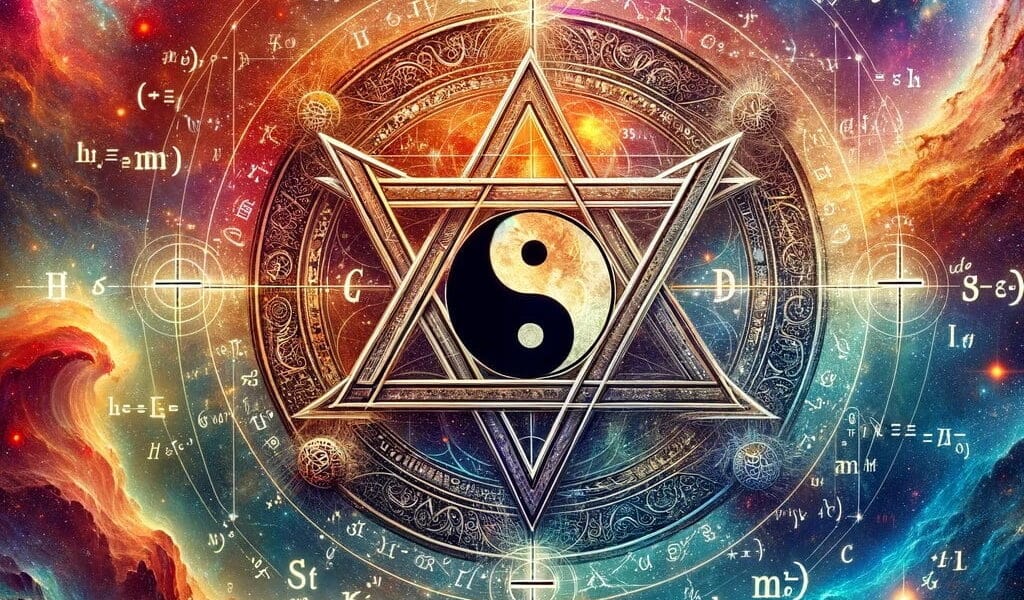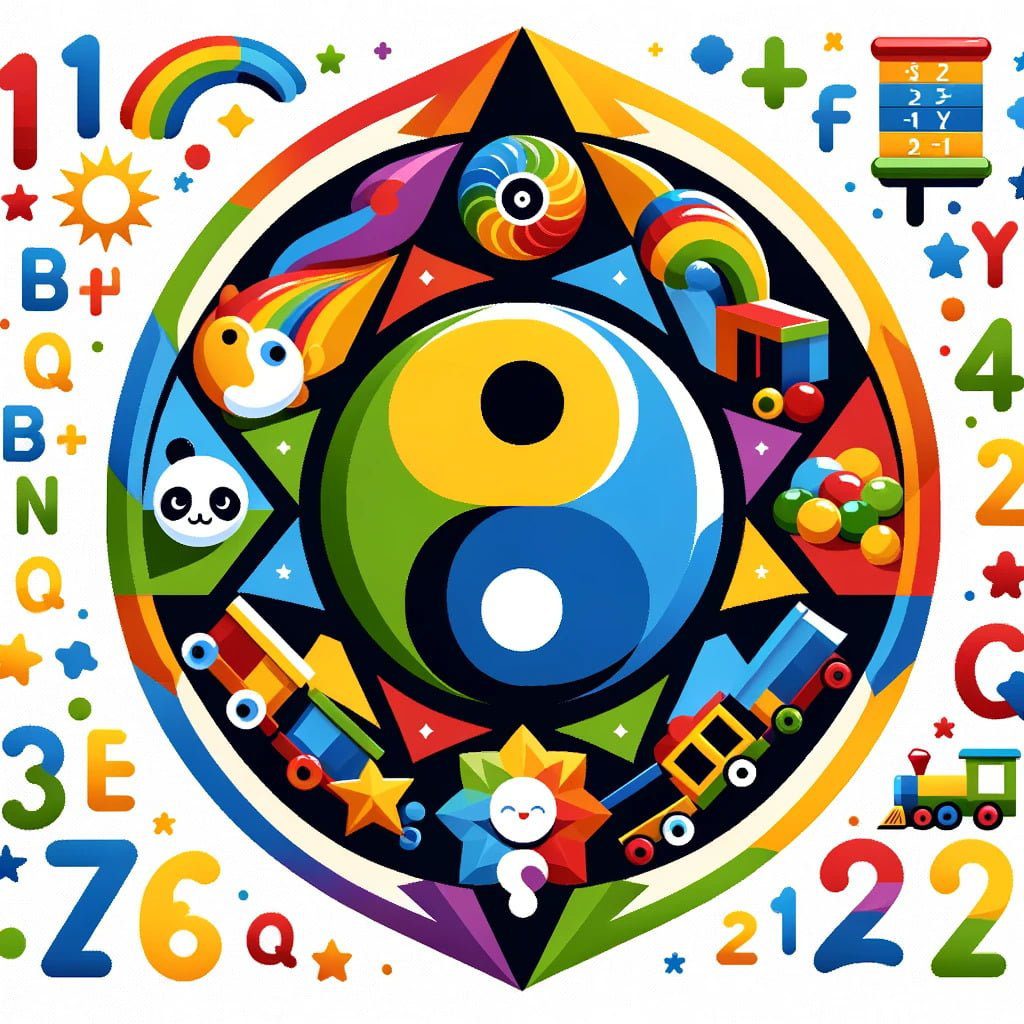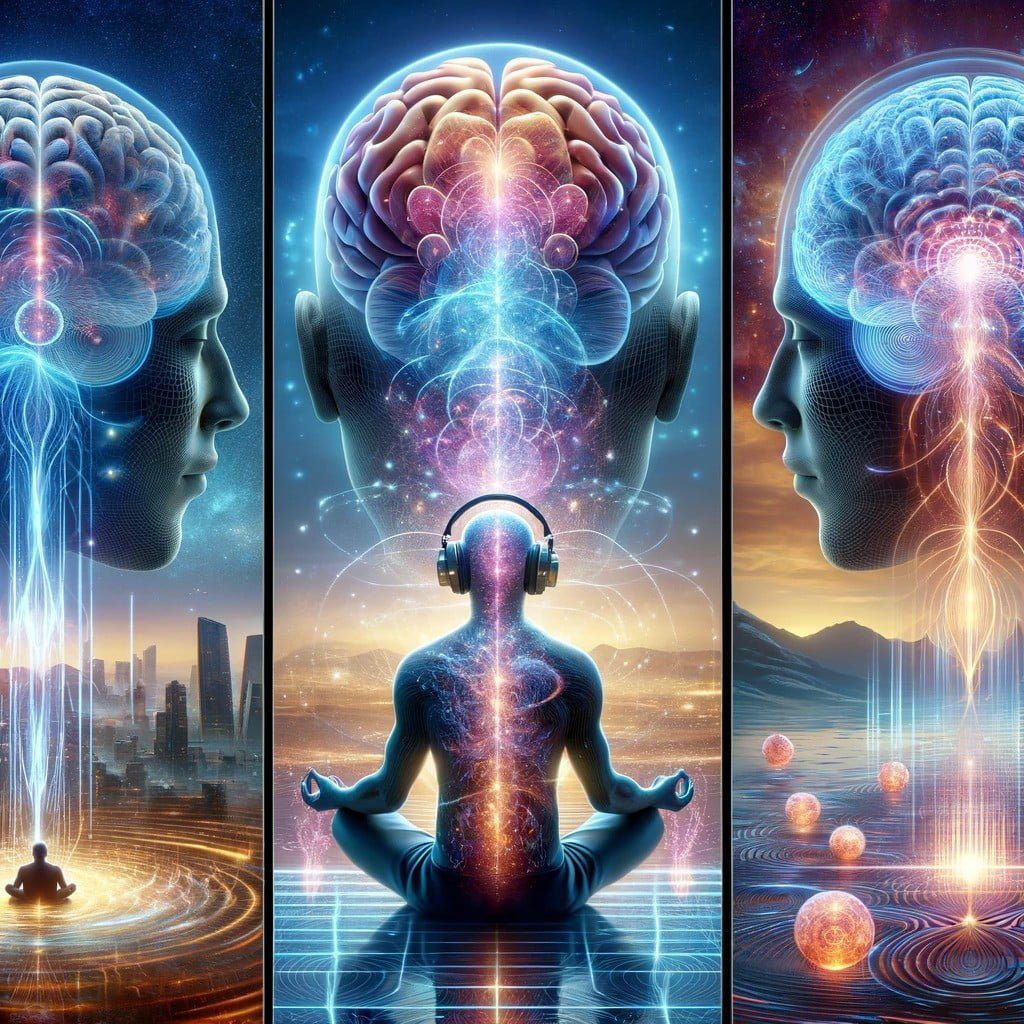
Similarities in Symbolism
Interestingly, the unicursal hexagram of Thelema and the Eastern Yin Yang symbol show insightful philosophical parallels. Additionally, these symbols intriguingly tie into quantum physics principles, notably exemplifying Niels Bohr’s concept of complementarity. Such a merging paves the way for the advent of quantum technoshamanism. We are beginning to see a merge of the old with the new. Particle and quantum physics bring old ideas full circle.
The Yin Yang and Quantum Theory:
In the Yin Yang’s flowing, interconnected nature, we see a reflection of the unicursal hexagram’s depiction of inseparable, opposing forces. This symbolic resonance finds reflection in quantum theory. In quantum theory, subatomic particles dwell in a probabilistic haze. They shift between contradictory states like wave and particle. These states are affected by observation. This quantum indeterminacy, collapsing upon measurement, mirrors the Yin Yang. It elegantly showcases the interdependence and mutual definition of seemingly opposite forces.
The Unicursal Hexagram and Connection of Opposites
The unicursal hexagram, representing the unity of opposites, resonates deeply with the principles of quantum technoshamanism. This symbol’s depiction of interconnected forces reflects how modern day alchemy aims to merge the mystical with the technological. It suggests that the ancient wisdom embodied in such symbols can inform and enrich our understanding of modern scientific concepts.
Heisenberg’s Uncertainty and Symbolic Parallels:
Moreover, Heisenberg’s uncertainty principle is a key concept in quantum mechanics. It emphasizes that accurately measuring one quantum trait limits insight into its complementary trait. This idea mirrors the symbolism of the Yin Yang. Each aspect embodies the other. They foster each other in a continuous, intertwined dance.
Transcending Dualism:
The unicursal hexagram and Yin Yang go beyond dualism. They show the quantum world’s complex nature, where particles have multiple potential states. This reflects a holistic view, embracing complementary forces. These symbols and principles challenge traditional views, promoting a probabilistic and paradoxical outlook. The unicursal hexagram and Yin Yang highlight how contradictions are interconnected, not opposing. They reveal that opposites contribute to life’s complexity. By accepting these symbols’ messages, we align with the universe’s harmonious nature, mirroring the uncertainty principle’s insights.
Thelema’s Principle of 0=2:
The Thelemic principle of 0=2 reflects Aleister Crowley’s ideas, emphasizing unity from duality. It suggests that existence’s dual nature (2) comes from and returns to non-duality (0).
This principle echoes quantum physics. Particles show wave and particle characteristics at the same time. They emerge from a cohesive quantum field. In a similar vein, the unicursal hexagram and Yin Yang show that all dualities are interlinked. Thelema’s 0=2 principle demonstrates this connection. Whether it is light and dark, or creation and destruction, all emanate from one foundational source.

0=2 and Wave-Particle:
In the context of quantum mechanics, one can draw parallels between the Thelemic principle of 0=2 and the wave-particle duality. Just as the 0 is the undifferentiated, unified field, the number 2 reflects the dual nature of quantum entities. This duality is not a permanent state but rather a manifestation of the underlying unity. It reflects the much like the quantum state of a particle, not fixed until it is observed. This aligns with the Thelemic view that clear dualities are merely different expressions of a single, underlying reality. The principle of 0=2 parallels quantum superposition, where particles are in many states at once until observed. In Thelemic thought, this reflects the universe’s diverse forms (2) arising from nothingness (0). It implies the universe’s complexities, including paradoxes and contradictions, are part of a unified entity. This challenges traditional views on separation and distinction.
Quantum Technoshamanism: Particle Physics and Philosophical Symbolism:
This exploration highlights how metrics confirm phenomena’s existence in both quantum mechanics and symbol interpretation. In quantum physics, measuring a particle’s properties solidifies its state, turning potential into reality. Similarly, the unicursal hexagram and Yin Yang show that defining one aspect confirms its counterpart’s existence. Measuring a quantum particle’s position also acknowledges its momentum, just as Yin implies Yang. This link between measurement and existence connects mystic symbols with quantum mechanics, showing unity between philosophy and science. Metrics, in measurements or symbols, bridge potentiality and reality. They underscore that observation and understanding are key to existence’s manifestation.
Quantum Physics: A Magical Rulebook
Quantum physics is often perceived as a mystical domain due to its counterintuitive principles. It aligns well with the perspectives we discuss here. The exploration of particles in multiple states mirrors the technoshamanism view on the spiritual and physical realms’ coexistence. This field suggests that technology, blended with shamanic wisdom, can open new understanding dimensions. This is akin to how the Yin Yang symbolizes both the duality and unity of existence.
Quantum Technoshamanism: Merging Ancient Mysticism with Modern Technology
Technoshamanism blends ancient shamanic practices with modern technology and science. It suggests that combining shamanic insights and rituals with technology and quantum physics can deepen our understanding of reality. Q.T. merges traditional symbols like the unicursal hexagram and Yin Yang with quantum mechanics. This synthesis aims for a nuanced view of the universe. It embodies a balance of spiritual intuition and scientific inquiry, connecting metaphysical beliefs with technological progress.
Conclusion:
In summary, the fusion of the unicursal hexagram, Yin Yang, and quantum principles provides a captivating outlook on reality. It encourages us to see the universe not merely as separate absolutes. Instead, we should view it as a rich tapestry of interconnected dynamics and potentialities. They suggest moving beyond perceived divisions to see existence as a unified, complementary dance. The merging of ancient symbolism with modern physics points to a deep truth. Existence is fundamentally about the interplay of harmonious opposites. Quantum mechanics advances support this notion.
[embedpress]https://www.deoxy.org/l_digpol.htm[/embedpress]



